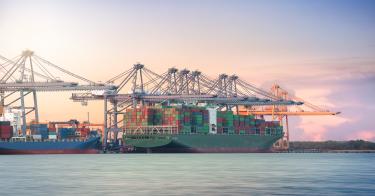Trade skeptics and protectionists have charged that trade agreements like NAFTA and the U.S.-Korea trade agreement favor foreign producers and have contributed to the U.S. trade deficit.
A recent Heritage Foundation event featuring speakers Frank Lavin, former undersecretary of Commerce for international trade, and Fredrik Erixon, the co-founder of a European think tank, explored the impact of free trade agreements on the U.S. balance of trade
Contrary to concerns, as Lavin and Erixon have pointed out in a recent policy brief co-authored with Hanna Deringer, free trade agreements generally improve the balance of trade in the U.S.
This should not be surprising, as Lavin said, “The U.S. typically has a lower tariff barrier than many of the countries with which we negotiate free trade agreements.”
When tariff barriers fall due to free trade agreements, they fall further in countries the U.S. trades with than in the U.S., so U.S. exports increase more relative to trading partners’ exports.
Lavin and Erixon wrote that the U.S. ran a trade deficit of about 5.1 percent with its free trade agreement partners in 2016, but a much larger deficit of approximately 30 percent with all non-free trade agreement trading partners that year.
This difference grew even more profound in 2017.
They elaborated in a recent article:
The lion’s share of the U.S. global deficit comes from countries with no [free trade agreement]. The [free trade agreement] partners of the U.S. represent about 40 percent of U.S. merchandise trade but only about 10 percent of the U.S. trade deficit. The U.S. trade deficit in goods with [free trade agreement] partners was just north of $70 billion in 2016, while the deficit with [non-free trade agreement] partners was more than $660 billion.
For Lavin and Erixon, the evidence is clear: The best way for the U.S. to prosper is to enter into more trade deals. The U.S. wins when tariff barriers fall.
In this context, the words of President Ronald Reagan ring true:
Over time, however, these imbalances should be reduced, and there are two ways to do it: We can become more like them, or they can become more like us. We can raise taxes, reregulate our economy, and adopt protectionist legislation of the kind now being considered in Congress. That will effectively slow growth in this nation and stifle international trade. We won’t be able to buy their goods and, certainly, no one will want to invest in the United States. The world can all shrink together, and we can all look forward to hearing the experts once again pontificating about convergence and the limits to growth.
The other solution is for them to become more like us: to adopt low-tax, pro-growth policies; to encourage trade, not discourage it—to make it freer and fairer and more plentiful; to join with the other nations in a cooperative, upward cycle of growth in which all participate; to embrace the possibilities of the new world economy.
More free trade deals that make other countries more like us remains the better option.
This piece originally appeared in The Daily Signal




